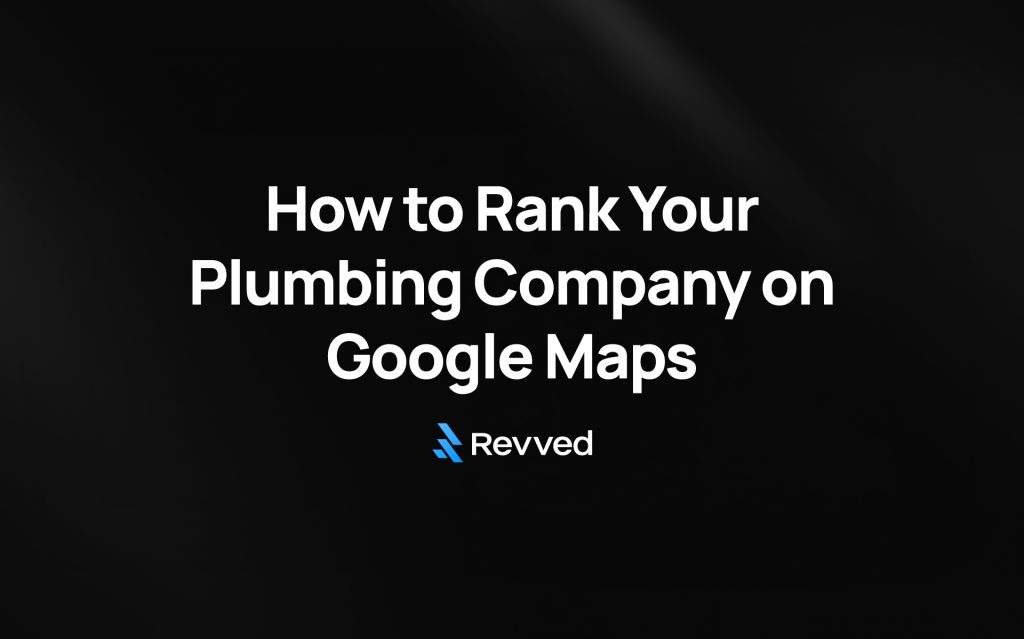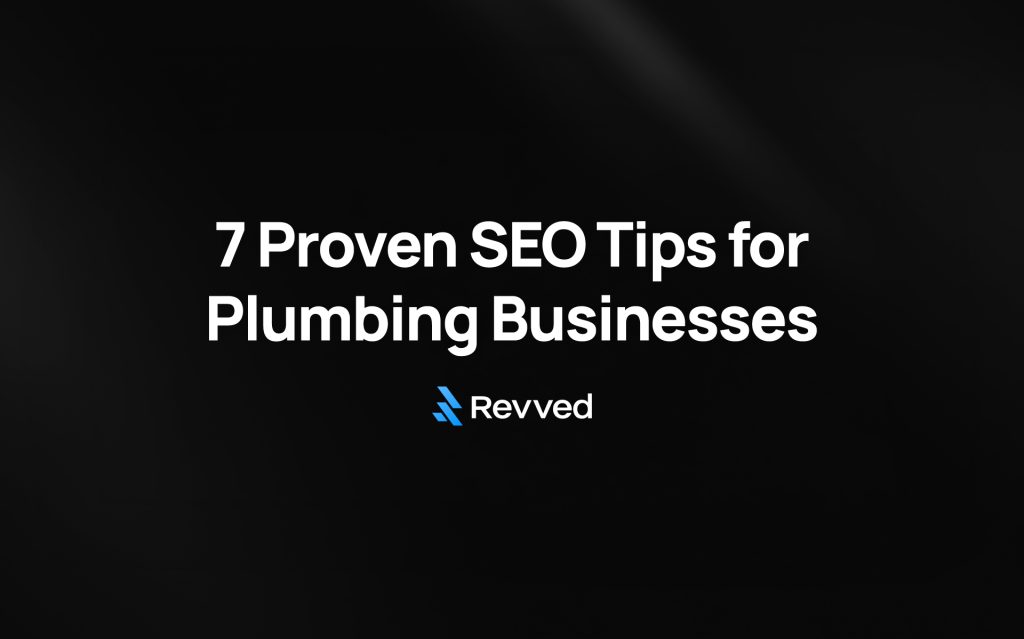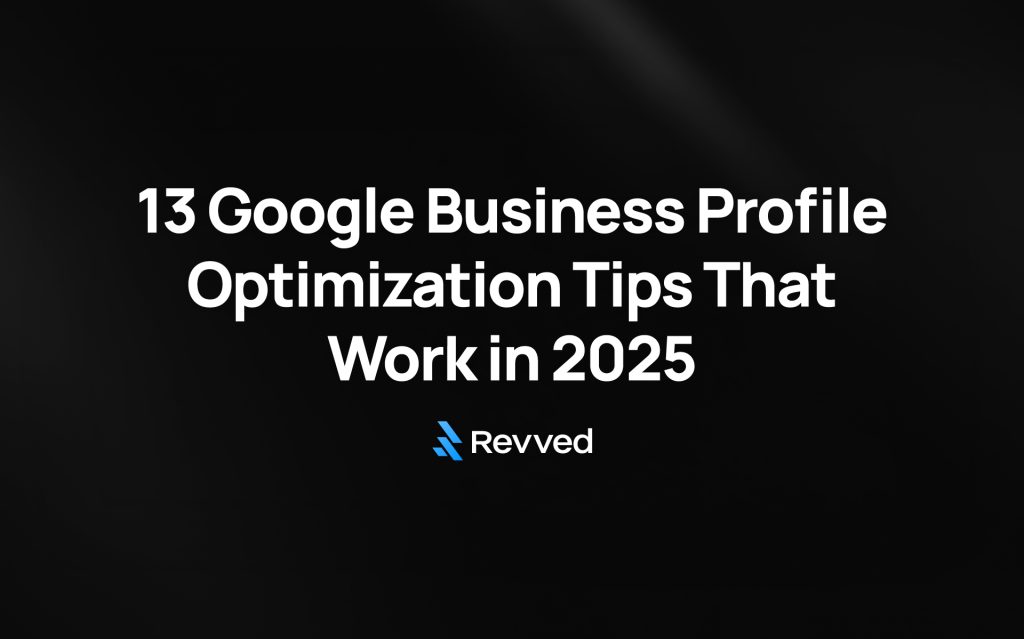A striking statistic shows that 70% of people searching for nearby plumbers on their phones make calls within a day. The numbers get better – 28% of these searches turn into actual bookings.
Your plumbing business loses potential customers to competitors without optimized local SEO. Google’s top three organic search results capture almost 69% of all clicks. This matters even more for plumber local SEO since people who look up “plumbing SEO near me” usually need immediate service.
Modern reality paints a clear picture. Nobody uses phone books anymore during plumbing emergencies. People grab their phones and search for the closest available help. Local search influences 79% of consumers’ decisions about which business they’ll hire.
This piece breaks down the exact steps to optimize your plumbing local SEO and secure a spot in Google’s Local 3-Pack – those prime three map listings that attract most clicks. These practical strategies will boost your business to the top of local search results, whether you manage your own marketing or need help from a plumbing local SEO company.
Understand How Google Maps Ranks Plumbing Businesses
Success on Google Maps isn’t random for plumbing businesses. Google’s local search algorithm follows specific rules. You’ll gain a real edge in plumbing company local SEO by knowing how these mechanics work.
Relevance, distance, and prominence explained
Google looks at three main factors to decide which plumbing businesses show up in local search results. These factors are the foundation of any local SEO strategy that works for plumbers.
Relevance shows how well your business matches what customers look for. Your chances of ranking higher go up when someone searches for “drain cleaning services near me” and your Google Business Profile and website clearly show these specific services. This means you need complete service descriptions and the right categories in your profile.
Distance looks at how close you are to the person searching. The algorithm favors plumbing businesses closer to the searcher. You can’t control where customers search from, but an accurate address in your profile helps you show up in searches within your service area. Being closer to the searcher means you’re more likely to appear in the coveted local pack.
Prominence shows how respected your plumbing business is online and offline. This factor reviews your online authority—domain authority, page authority, backlink profile—and offline reputation. Google checks prominence through several signals:
- Customer reviews (quantity, quality, and recency)
- Business mentions across the web
- Social media presence and involvement
- NAP (Name, Address, Phone number) consistency across platforms
These three factors combine to set your ranking. A properly optimized Google Business Profile affects all three, especially relevance and prominence.
Why Google Maps is critical for plumbers
Google Maps plays a crucial role in plumbing local SEO. Research shows 64% of consumers find local businesses through Google, and 76% visit that business within 24 hours. Four out of five people check Google Maps before they contact a service business in their area.
Google gets about 62 billion visits each year. Almost half of these visits come from people looking for local businesses. This makes Google Maps vital for plumbing companies to connect with potential customers.
Plumbing services are different from many other businesses because people need them right away. A burst pipe or blocked drain needs quick fixing. Google Maps connects these urgent customers to your physical business location.
Google Maps listings show key business details:
- Operating hours
- Contact details
- Customer reviews and ratings
- Photos of your work
- Services offered
Good reviews and high ratings help build trust before customers call you. This matters a lot for plumbing companies since customers usually need quick service during plumbing emergencies.

Enter your website below to start your proposal request!
The Local Map Pack (top three map listings) is valuable real estate for local plumbing SEO. These positions get more clicks than regular organic results. You need a verified Google Business Profile to rank here, so optimizing your profile is key to any plumbing local SEO company strategy.
Your plumbing business can attract more local customers by focusing on these three ranking factors—relevance, proximity, and prominence. This approach will boost your visibility on Google Maps and help grow your business in your service areas.
Start with a Strong Google Business Profile
Your Google Business Profile is the life-blood of local SEO success for plumbing companies. A well-optimized profile boosts your Google Maps visibility by 70% and gets more calls from potential customers in your area.
Claiming and verifying your listing
The first critical step gives you control over how your plumbing business shows up in search results – claiming your Google Business Profile. Here’s how to start:
- Visit business.google.com and sign in with a dedicated business Gmail account
- Search for your plumbing company’s name
- If your business appears, click “Claim this business”
- If not found, select “Add your business to Google”
Google needs to verify you’re the real business owner. This verification lets you manage the profile and unlocks advanced features that help your plumbing local SEO. You’ll usually have these options:
- Postcard verification: Google mails a verification code to your business address (takes 5-14 days)
- Phone verification: Get a text or call with a verification code
- Email verification: Receive a code through your business email
- Video verification: Do a live video call with Google (limited availability)
Using a dedicated Google account for your business makes everything more organized. This helps you manage all your Google properties better. Many plumbing local SEO companies recommend this approach.
Optimizing categories, photos, and services
After verification, picking the right categories is crucial. Your main category determines when your business shows up in searches. This makes it vital for local plumbing SEO.
Pick “Plumber” as your main category. Add these relevant secondary categories that match your services:
- Emergency Plumbing Service
- Drainage Service
- Water Heater Installation Service
- Sewer Service Company
- Pipe Fitting Service
Businesses with photos get 42% more direction requests and 35% more website clicks. Your plumbing business should show:
- Professional photos of uniformed technicians
- Clean, branded service vehicles
- Before/after project photos (dramatic changes work best)
- Interior office/shop images (if customers visit)
- Action shots of technicians at work
Quality beats quantity – your images should be clear, well-lit and authentic. Profiles with 100+ great photos get up to 713% more customer views. This makes photos worth your time and effort.
The Services section needs a list of all your plumbing work with descriptions and prices where possible. This detailed listing helps Google understand your business and shows up when people look for specific plumbing needs. List every major service:
- Emergency plumbing
- Drain cleaning
- Water heater services
- Leak detection and repair
- Pipe replacement
- Fixture installation
- Sewer line services
Write a powerful business description (750 characters max) that shows your credentials, services, and what makes you unique. Add your main keyword “plumbing company local SEO” naturally while highlighting your expertise, experience, and service area.
Note that your Name, Address, and Phone number (NAP) should match exactly across your website and other online listings. This helps your local plumber SEO work better.
Use Local SEO Keywords on Your Website
Local SEO success depends on the right keyword strategy. Statistics show that 46% of Google searches for local businesses include location terms. Your plumbing company’s visibility will increase when you implement local keywords correctly on your website.
How to find the right keywords
The best keywords for your plumbing business come from strategic research, not guesswork. Start by listing all your services like “emergency plumbing,” “leak repair,” and “drain cleaning”. Next, add location terms that customers might use in their searches.
Several tools are a great way to get the right keywords:
- Google Keyword Planner – This tool helps you organize keywords into categories, search for new terms, get search volume data, and create performance forecasts
- SEMrush – Shows competitive analysis and keyword difficulty metrics
- Moz Keyword Explorer – Gives details about search volume and ranking difficulty
- Ubersuggest – Helps you find related keywords and content ideas
Your research should target both short and long-tail keywords:
Short keywords typically include:
- “Plumber in [city]”
- “Plumbing services [location]”
- “Emergency plumber [city]”
Long-tail keywords reflect specific customer problems:
- “How to fix a backed-up toilet”
- “Repair leaking pipe”
- “Water heater replacement cost”
The keyword “plumber” gets about 135,000 monthly searches, while “emergency plumber” sees 27,100 searches monthly. Location-specific combinations lead to better conversion rates despite lower search volumes.
Your competitors’ keyword strategies give an explanation of what works in SEO. Look at the terms your successful competitors rank for and how they structure their content.
Where to place them for best results
Strategic keyword placement throughout your website maximizes their effect. Natural incorporation of local keywords in your website’s content and meta tags attracts local customers.
Keywords work best in these locations:
- Title tags – Add your location and business category (Example: “Plumber in San Diego | Your Business Name”)
- Meta descriptions – Write engaging descriptions with your location and services (Example: “[Business Name] offers professional plumbing services in [City]. Call [phone number] for same-day service!”)
- Headers and subheaders – Use location terms in H1, H2, and H3 tags
- URL structure – Add location terms in your URLs when possible
- NAP information – Your Name, Address, and Phone number should appear consistently in your website’s footer
Each service area needs its own dedicated page. Multiple locations require individual pages rather than combining all locations on one page. This helps target keywords more precisely and matches what users search for.
Service pages are ideal spots for keyword optimization in plumbing local SEO strategies. Create separate pages for each service (water heater repair, drain cleaning, emergency services) with relevant keywords naturally woven into the content. Search engines understand your services better, and users find information easily.
Note that quality matters more than quantity—keyword stuffing hurts your rankings. Focus on creating valuable content that naturally includes your target keywords and answers your potential customers’ questions.
Create Pages for Each Service Area
Many plumbing businesses miss out on a powerful strategy – creating dedicated pages for each service area. These specialized pages, known as Service Area Pages (SAPs), help establish your digital presence in communities you serve, even without physical offices there. Your local search visibility can improve dramatically with these pages, especially when your plumbing company covers multiple cities or neighborhoods.
Why separate pages help rankings
Google’s algorithm favors websites that show deep connections to specific locations. Individual pages for each service area signal search engines that your plumbing business matters to searchers in those communities. This strategy offers several competitive advantages for plumbing company local SEO:
Service area pages help bridge the geographical gap between your physical location and areas you serve. This becomes valuable when you have plumbers working in multiple cities or neighborhoods but operate from a single office.
These pages boost your visibility substantially in organic search results. You have better chances of appearing when potential customers look for plumbing services in specific areas, especially in competitive markets like Chicago or Denver.
Service area pages bring in more qualified leads. Customers who find a page mentioning their city or neighborhood are usually ready to call—they need immediate help in their area, not general information.
The core team at most plumbing businesses don’t create these pages, which gives you an edge over competitors. These pages also strengthen your overall website structure in Google’s assessment and build domain authority that benefits all your pages.
What to include on each page
Each service area page needs unique, location-specific content to work. Google will penalize duplicate content if you simply copy the same information across multiple pages with different city names. Here’s what your service area pages should include:
- Location-specific keywords – Strategic placement of terms like “plumber in [City]” and “emergency plumber [Neighborhood]” in titles, headings, and content
- Service descriptions – List specific plumbing services available in that location, with separate sections for each primary service
- Local relevance signals – References to neighborhood names, main roads, local landmarks, or area-specific plumbing challenges
- Google Maps integration – A map showing your service radius or highlighting the specific neighborhood
- NAP information – Your Name, Address, and Phone number matching your Google Business Profile
- Local testimonials – Reviews from customers in that specific area (e.g., “Sarah in Glendale”)
- Area-specific FAQs – Questions relevant to that location like “How soon can you reach my home in [City]?”
- Internal links – Connections to main service pages and other relevant city pages
- Schema markup – LocalBusiness schema with accurate details improves indexing
- Trust signals – Certifications, years in service, and local business partnerships
Note that each plumbing service should have its own optimized landing page within your site structure. H1 and H2 tags should reflect natural user language like “Affordable Sewer Line Repair in [City]”.
Larger plumbing companies with extensive service areas benefit from these pages through an organized site architecture. Both users and search engines understand your coverage better. This structure helps local SEO for plumbers who serve multiple communities from one location.
Service area pages act as a hub for your local SEO strategy. They establish both proximity and prominence—vital ranking factors discussed earlier. These pages create a powerful local presence across your service territory when optimized with location-specific content alongside your Google Business Profile.
Encourage and Manage Customer Reviews
Customer reviews serve as reputation builders and powerful SEO assets in the plumbing industry. A strong review strategy often determines which local plumbing businesses thrive and which ones struggle. These online reviews work like digital word-of-mouth referrals and disrupt how potential customers find and select your services.
How reviews influence trust and rankings
Google’s algorithm favors plumbing businesses that maintain strong, consistent review profiles, especially in the coveted Local Pack listings at the top of search results. Businesses ranking in Google’s Local Pack usually have 50+ reviews with an average rating of 4.5 or higher. This happens because Google sees customer feedback as proof of reliability in trust-based industries like plumbing.
Reviews substantially affect your plumbing local SEO in several ways:
- Positive reviews lift your Google rankings
- Reviews with relevant keywords boost search visibility
- Regular review activity shows an active, involved business
- Review responses improve engagement metrics
Reviews do more than help with SEO – they shape consumer decisions. About 92% of people read online reviews before choosing a plumbing service. Plus, 78% of consumers trust these reviews as much as recommendations from friends or family. These trust signals matter even more since 57% of consumers only use businesses with 4 or more stars.
Reviews pack serious conversion power for plumbing local SEO company strategies. They drive higher website click-through rates and better conversion rates when potential customers call. This social proof becomes vital when clients need urgent plumbing services and must make quick decisions.
Tools to automate review collection
Systematic approaches work better than random efforts to collect reviews. Many tools help plumbing businesses streamline this process.
The right timing makes a big difference when asking for reviews. Smart plumbers ask right after finishing a job when customer satisfaction peaks. Plumbers who actively ask for reviews get three times more positive feedback than those who wait for customers to leave them.
Automated systems take the awkwardness out of review requests. RealWork, Jobber Reviews, and ServiceTitan blend with your existing workflow to send personalized review requests through email or text after service completion. These systems can trigger based on specific events in your CRM software.
Simple review processes get better response rates. You might want to try:
- QR codes on invoices, business cards, or technician tablets for instant review access
- Mobile apps to collect reviews while still at the customer’s property
- Automated follow-ups when original requests get no response
Review management goes beyond collection. Responding to reviews shows your steadfast dedication to customer satisfaction while boosting local SEO for plumbing. Tools like DataPins can showcase your best reviews on your website homepage, where visitors convert at much higher rates.
A solid investment in review automation creates a steady stream of fresh, positive signals that lift your plumbing business above competitors in both search rankings and consumer trust.
List Your Business in Local Directories
Local directories serve as digital signposts that guide potential customers to your plumbing business. Your business name, address, and phone number (NAP) mentions on these platforms are vital to build your company’s online credibility and visibility beyond your website and Google Business Profile.
Best citation sources for plumbers
Quality matters more than quantity when it comes to plumbing company local SEO directories. You’ll get better results by focusing on relevant, high-quality platforms instead of randomly submitting to hundreds of sites. These directory types should be your priority:
General business directories rank well in search results and give your business broad visibility:
- Google Business Profile (absolute must-have)
- Yelp
- Angi (formerly Angie’s List)
- Apple Maps
- Bing Places
- Better Business Bureau
Industry-specific directories help customers find plumbing services directly:
- HomeAdvisor
- BuildZoom
- Porch
- BestPlumbers.com
- NetworkX
- Thumbtack
- FindaPlumber
- MeetaPlumber
Local directories help build community connections:
- Your Chamber of Commerce website
- Local newspaper business directories
- Regional home service platforms
Data aggregators like ExpressUpdate, Neustar Localeze, and Acxiom feed information to many smaller directories. Your correct information submitted to these aggregators changes the digital world.
The quality of your citations matters more than how many you have for plumber local SEO. Domain authority should guide your citation choices. Directories like Houzz (89), HomeAdvisor (78), and Porch (77) provide better SEO value because of their higher domain authority.
How to fix inconsistent listings
Both potential customers and search engines get confused by inconsistent citations, which can hurt your local SEO rankings. Here are common problems to watch for:
- Name variations – “Smith & Sons Plumbing” versus “Smith and Sons Plumbing”
- Address format differences – “Street” versus “St.” or missing suite numbers
- Phone number format inconsistencies – “(555) 123-4567” versus “555-123-4567”
- Category variations – Different directories using different service classifications
Start by creating a master spreadsheet with your official NAP information—this becomes your reference point for all corrections. Then fix high-impact directories like Google Business Profile, Apple Maps, and Bing Places before moving to industry-specific platforms.
These tools can make the cleaning process easier:
- Moz Local identifies discrepancies across major directories
- BrightLocal monitors listings continuously and alerts you to changes
- Whitespark’s Local Citation Finder helps track down where your business appears
- Yext’s Business Scan tool identifies missed listing opportunities
Proper citation management gives plumbing businesses a real edge in local SEO strategies. Businesses with consistent NAP information rank higher in local search results. On top of that, directories like Expertise and Angi often appear right below the local 3-pack for plumbing searches, which creates more exposure.
A steady approach works best. Add 5-7 directories each month rather than creating 50 listings at once. Search engines reward this natural pattern of citation building with better rankings.
Add Schema Markup for Local SEO
Schema markup is a powerful tool that many plumbing companies don’t use enough in their local SEO strategies. This technical boost can make a big difference in how search engines read your website information and help you show up better in local searches.
What is schema and why it matters
Schema markup (or structured data) works like a special code language that helps search engines like Google understand your website content better. This code acts as a translator between your content and search algorithms to provide clear context about your plumbing business, services, and key details.
Plumbing businesses can get several great benefits from schema markup:
- Enhanced visibility in search results that makes your listing pop
- Increased click-through rates from rich snippets that show more upfront information
- Improved local search rankings through consistent NAP (Name, Address, Phone) details across search platforms
- Position zero potential because structured data helps earn featured snippets
Research shows that websites that use schema markup rank about four positions higher in search results than those without it. While schema isn’t the only factor behind this boost, it plays a vital part in detailed local SEO for plumbers.
LocalBusiness Schema works best for plumbing businesses. It lets search engines display key information such as:
- Business name, address, and phone number
- Operating hours
- Service offerings
- Geographic service areas
- Customer reviews and ratings
How to implement it on your site
Adding schema markup to your website starts with picking the right format. You have three main structured data formats to choose from:
- JSON-LD (JavaScript Object Notation for Linked Data) – Google prefers this format because it’s easy to implement and maintain
- Microdata – HTML-based format that’s simple to learn
- RDFa – More complex format that fewer people use
JSON-LD works best for plumbing local SEO company strategies because you can add it as a simple script without changing your existing HTML.
Here’s how to add schema markup to your plumbing website:
- Find the right schema type at schema.org (usually LocalBusiness or Plumber)
- Create your JSON-LD script using Google’s Structured Data Markup Helper or other schema generators
- Add essential information like business name, NAP details, hours, and services
- Put the script in the
<head>or just before the closing</body>tag - Check your work using Google’s Structured Data Testing Tool or Rich Results Test
Your schema markup needs accurate, current information. Keep your schema data matching all your other online listings to get the best local SEO results for plumbing.
The technical side might look challenging at first. Many plumbing businesses work with experts who know both schema markup’s technical aspects and plumbing local SEO needs.
Monitor Your SEO and Google Maps Performance
Monitoring plays a vital role in making local SEO campaigns work for plumbers. Your optimization efforts need tracking of performance metrics. These metrics help you verify what works and show ways to improve your plumbing company’s local SEO strategy.
Tracking calls and clicks from GBP
Many plumbing businesses get website visits, calls, and leads through Google Business Profile (GBP). You can learn about these metrics by logging into your Gmail account connected to your GBP and searching for your company name. The “Performance” section shows your metrics when you click on it.
These important metrics need your attention:
- Business Profile Interactions – Combined actions like calls, messages, and direction requests
- Calls – Number of phone calls made directly from your profile
- Website Clicks – Users who clicked through to your website
- Messages – Customer conversations initiated through GBP
- Direction Requests – People seeking your physical location
A call tracking service like CallRail helps you understand the real ROI. You can assess the quality of your calls with this tool. A plumbing company might get 300 calls from GBP, and this system shows how many turned into actual bookings. UTM tags on your website link help you distinguish GBP traffic in Google Analytics and give you clear conversion data.
Using tools like Moz and BrightLocal
You need specialized tools beyond GBP insights to get detailed monitoring. Google Search Console shows which keywords bring views and clicks. It helps track web page rankings and spots high-traffic pages. Google Analytics reveals how visitors behave, how long they stay, and where they come from.
These third-party platforms give deeper analysis for plumbing local SEO:
- Moz Pro – Site auditing, backlink analysis, and rank tracking
- BrightLocal – Citation monitoring and review management
- SEMrush – Keyword research and competitor analysis
- Ahrefs – Backlink tracking and SEO performance monitoring
Looking at these metrics regularly helps you spot trends and boost your online presence. It ensures your business information stays accurate. Your plumber local SEO becomes evidence-based instead of guesswork when you monitor it carefully.
Conclusion
Getting your plumbing business to rank on Google Maps takes consistent work on many digital fronts. You now know how Google assesses local businesses based on relevance, distance, and prominence. These three pillars determine whether your company shows up in those valuable top map spots.
Your Google Business Profile forms the foundation of your local SEO strategy. Claiming, verifying, and optimizing this profile should be your top priority. You need accurate categories, eye-catching photos, and detailed service listings. Your website’s strategic keyword placement and dedicated service area pages will boost your local search visibility by a lot.
Reviews work as powerful trust signals without doubt – both for potential customers and search engines. A systematic approach to collecting reviews brings huge benefits to plumbing businesses that need to build credibility fast.
Directory listings and schema markup might look technical, but they give search engines vital context about your business. Your strategy gets better when you track performance through Google Business Profile insights, Google Analytics, and specialized SEO tools. This data-based approach works better than making assumptions.
Local SEO takes time to show results. Steady application of these strategies will improve your visibility, and your plumbing business will show up when nearby customers need you most. The end goal remains simple – connecting your expertise to homeowners with plumbing emergencies who search “plumber near me.”
Put these techniques to work today. Watch your plumbing business rise in local rankings, stand out from competitors, and grow through a steady flow of local customers ready to book your services.



![Digital Marketing for Plumbers: What Actually Works in 2025 [Real Results]](https://revved.digital/wp-content/uploads/2025/10/Digital-Marketing-for-Plumbers-What-Actually-Works-1024x639.jpg)
![Why Local SEO for Plumbers Is Your Best Investment in 2025 [Expert Data]](https://revved.digital/wp-content/uploads/2025/10/Why-Local-SEO-for-Plumbers-Is-Your-Best-Investment-1024x639.jpg)







